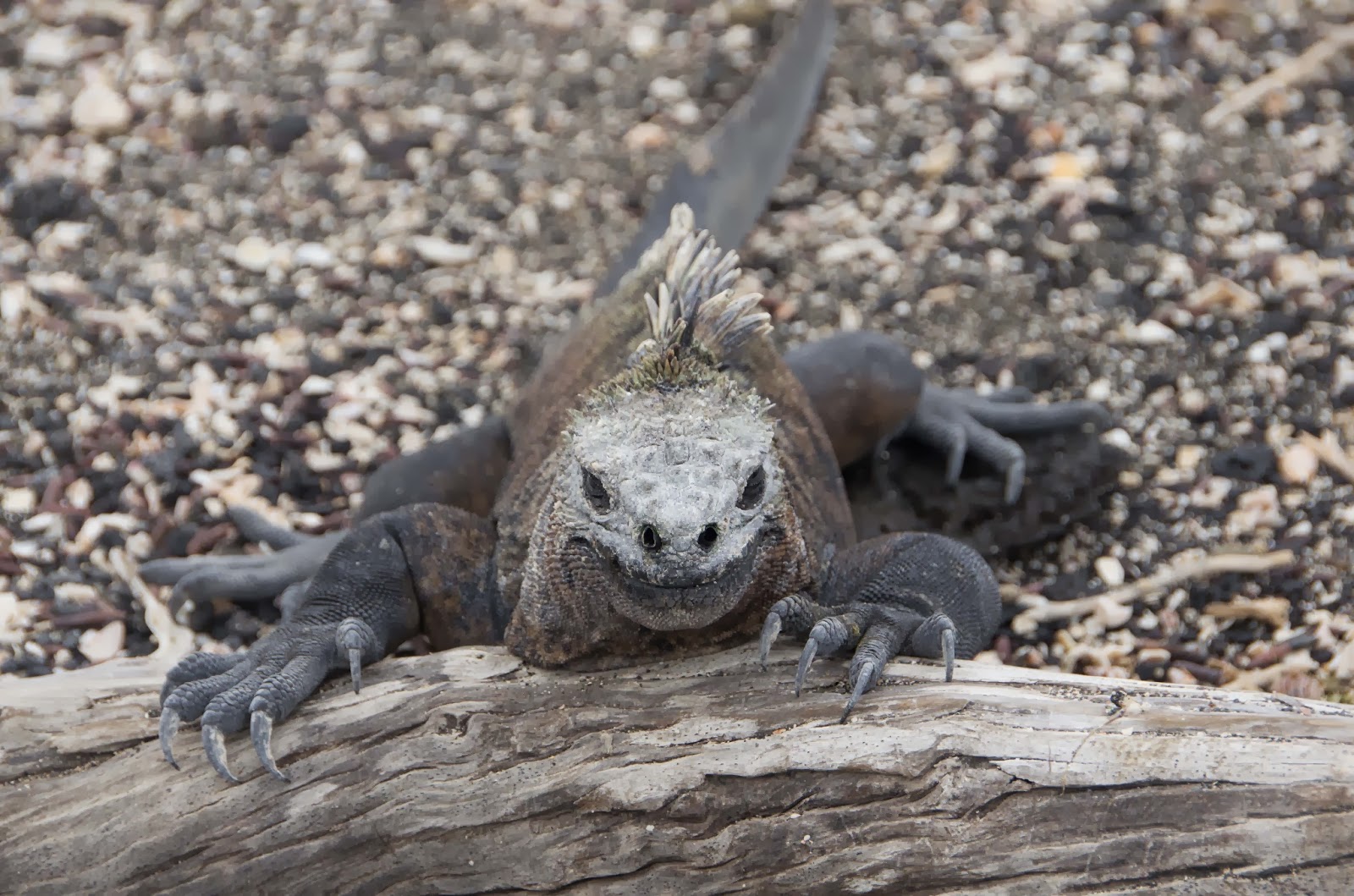Fernandina is the youngest and least vegetated of the
islands. Because it is so young and also the furthest west it is also the most
pristine island, probably in the world. This is one island in the group that
has managed to stay free of any introduced species. The upwelling of the
Cromwell current provides ample nutrients for the fauna that inhabit the
island.
 |
| Lava cactus beginning to colonize |
 |
| Examining a whale skeleton |
We left the pangas in a mango grove for our walk around
Point Espinosa. After the short walk through the trees we spent the rest of the
walk navigating the lava flows observing the largest group of marine iguanas
along with several of the endemic birds of the islands. Of particular interest
were the migrating shorebirds that are regularly seen here along the Washington
and Oregon coasts: whimbrel, ruddy turnstone, willet, and semi-palmated plover.
While it was a disappointingly cloudy morning, I was still able to get some
good pictures of the iguanas and flightless cormorants. It was also my first
chance to get a good look at the Galapagos Dove that I saw from a distance at
the airport.
 |
| It's easy to see why these are Flightless Cormorants |
 |
| It is the fighting season |
 |
| Galapagos Dove |
We got some really good views of male iguanas beginning to
compete as the breeding season begins. You can tell that they are ready to fight
when they begin to bob their heads. While we saw a lot of this aggressive
behavior, we didn’t see any actual fighting. We also witnessed a couple of the
flightless cormorants fighting over territory by the shore.
 |
| Too many to count |














No comments:
Post a Comment